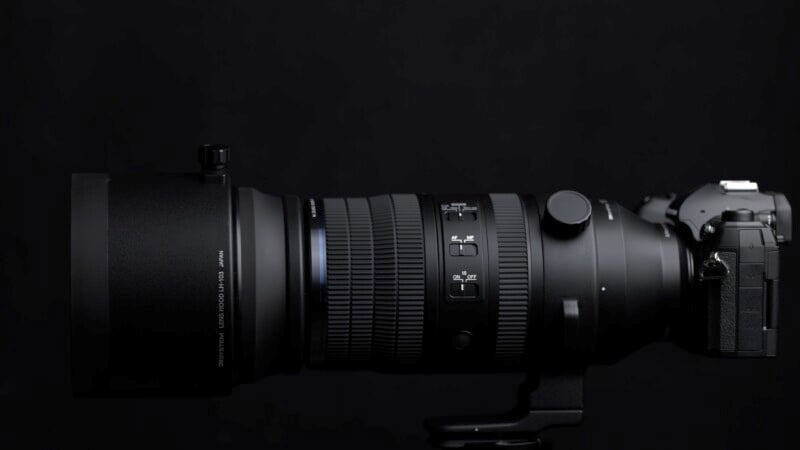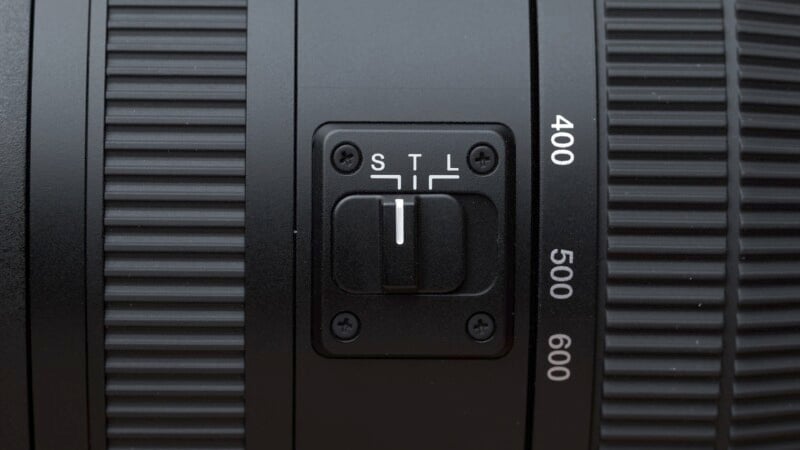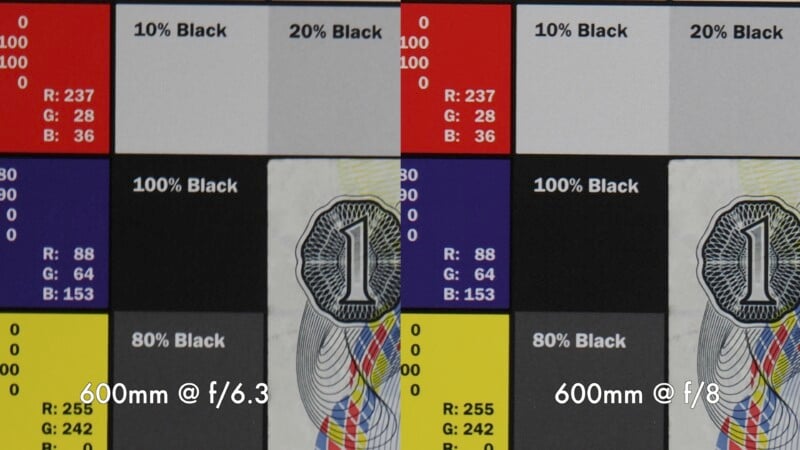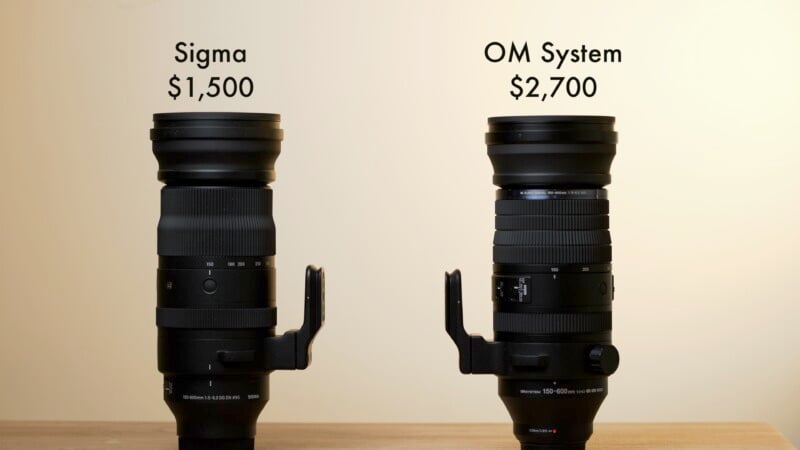An OM System 150-600mm f/5-6.3 has been sitting in the office for months and I haven’t touched it since I tested the OM-1 Mark II. Finally, the cold weather had given way and I had no excuse to ignore it anymore. A trip to the Calgary Zoo would let me test out not only the wildlife capabilities of this lens but also the excellent macro versatility that the lens offers.
The elephant in the room is that OM System has been rebranding full-frame Sigma telephoto lenses; the notable lens that comes to mind is the 100-400mm f/5-6.3. Now the company has done it again with the Sigma 150-600mm f/5-6.3 and although both lenses are excellent, this choice does have some important ramifications. The full-frame lenses project a much larger circle of light than is required, meaning the OM bodies use only the more central part of the light path. However, this also means the lenses are either larger than they need to be or could have been brighter for the same given size. This aside, there is no denying that the 1200mm equivalent reach is astounding.

OM System M Zuiko 150-600mm f/5-6.3: How it Handles
So the OM System 150-600mm might be larger than it needs to be but it is still a manageable weight at just under 73 ounces (2,065 grams), especially given the enormous telephoto range that it can provide. I like the reverse tapered zoom ring which has a short throw and naturally falls into the hand without looking. Just like the Sigma 150-600mm lens, the OM System version has a handy lip that the photographer can push or pull with their hand, thus zooming the lens rapidly. There is even the same switch as the Sigma version that allows you to lock the zoom, provide a strong amount of resistance against lens creep, or make zooming smooth and quick.

The body is very well sealed against the elements and comes with a strong lens hood to prevent flare and protect the front element where 95mm filters can be attached to the front and without any drop-in filter systems. The lens has customizable buttons, autofocus range limits, and built-in image stabilization which works in sync with the OM bodies.


The 150-600mm uses stepping motors to drive the glass elements and I found the focusing speed to be snappy at 150mm but somewhat slower at 600mm. To keep this in context though, the slow focusing is from close to far distances at 600mm, and in practical focusing situations, your subjects will usually be at far reaches where the focusing responds perfectly fast enough.

OM System M Zuiko 150-600mm f/5-6.3: How it Shoots
Not only can the 150-600mm shoot far but it can also shoot close. At 150mm it delivers 0.35x magnification which is close to 1:3 life-size reproduction. At 600mm, the working distance is a little too far at just under three meters but the close-up is still impressive at 0.2x magnification. Regardless, the 150-600mm is a versatile close-up lens that allows for pictures of insects and small critters without having to be right next to them.

Flare is something that plagued the Sigma version of this lens so make sure the hood is attached and be careful where the position of bright light sources are. Ghosting is very well controlled but a general washed-out loss of contrast will rear its ugly head if bright light hits the front element. In some situations, it can be useful for dreamy-looking sunset portraits but for the most part, it’s undesirable.

Bokeh is pleasant with no onion rings showing up in specular highlights and only a moderate amount of soap bubble effect. Because the Micro Four Thirds sensors will only utilize the central portion of the light path, the cat’s eye vignetting present in the Sigma 150-600mm lens on full-frame cameras doesn’t show itself here on the OM system bodies, even when shooting at the widest apertures. Overall, the transitions of focus are smooth and the backgrounds have a soft, nondescript look to them.

Excellent sharpness is something that users have come to expect out of high-end telephoto lenses and the OM System 150-600mm doesn’t disappoint. At 150mm it is excellent both in the center of the image and out to the corners at f/5. If you stop down the lens further the improvements are incredibly minor. The wonderful corner sharpness is undoubtedly assisted again by the more central light path being used. At 600mm, the center sharpness is acceptable at f/6.3, however, I did find that stopping down to f/7.1 or f/8 helped noticeably. Corners are excellent again but I do wish that our particular sample was better wide-open at the long end. Because of this outcome, I purposefully stopped the aperture down at 600mm on a sensor platform which needs all the light it can get.

OM System M Zuiko 150-600mm f/5-6.3: Large Lens, Large Range
With this telephoto lens, we have an optic that’s a little larger than it needs to be while delivering excellent range and optics. There is no denying that the 150-600mm is versatile and make no mistake, it’s still fairly easy to carry around all day. But when the higher price tag of $2,700 is added to the OM System version of the lens, I can’t help but feel that I want more light or less bulk for my money. Still, if you need a lens that has humongous telephoto reach the OM System 150-600mm is worth a look.

Are There Alternatives?
Frankly, there aren’t many practical choices to consider which is why this lens will find its way into many users’ bags. The Pro series OM System 150-400mm f/4.5 gives more light and with its built-in teleconverter also competes for range, but the professional pricing is prohibitive to almost everyone.
Should You Buy It?
Yes. There may not be any alternatives but with the compromises of using a full-frame formula aside, the 150-600mm is still functional and the images are beautiful.
